Related Research Articles
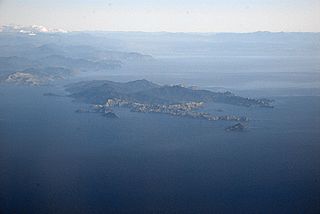
D'Urville Island, Māori name Rangitoto ki te Tonga, is the largest island in the Marlborough Sounds, on the northern coast of the South Island of New Zealand. It was named after the French explorer Jules Dumont d'Urville. With an area of approximately 150 square kilometres (58 sq mi), it is the eighth-largest island of New Zealand, and has around 52 permanent residents. The local authority is the Marlborough District Council.

A number of introduced species, some of which have become invasive species, have been added to New Zealand's native flora and fauna. Both deliberate and accidental introductions have been made from the time of the first human settlement, with several waves of Polynesian people at some time before the year 1300, followed by Europeans after 1769.

Zealandia, formerly known as the Karori Wildlife Sanctuary, is a protected natural area in Wellington, New Zealand, the first urban completely fenced ecosanctuary, where the biodiversity of 225 ha of forest is being restored. The sanctuary was previously part of the water catchment area for Wellington, between Wrights Hill and the Brooklyn wind turbine on Polhill.

The ecological restoration of islands, or island restoration, is the application of the principles of ecological restoration to islands and island groups. Islands, due to their isolation, are home to many of the world's endemic species, as well as important breeding grounds for seabirds and some marine mammals. Their ecosystems are also very vulnerable to human disturbance and particularly to introduced species, due to their small size. Island groups, such as New Zealand and Hawaii, have undergone substantial extinctions and losses of habitat. Since the 1950s several organisations and government agencies around the world have worked to restore islands to their original states; New Zealand has used them to hold natural populations of species that would otherwise be unable to survive in the wild. The principal components of island restoration are the removal of introduced species and the reintroduction of native species.

Secretary Island is an island in southwestern New Zealand, lying entirely within Fiordland National Park. Roughly triangular in shape, it lies between Doubtful Sound / Patea in the south and Te Awa-o-Tū / Thompson Sound in the north, with its west coast facing the Tasman Sea. To the east of the island, Pendulo Reach connects Te Awa-o-Tū / Thompson Sound with Doubtful Sound / Patea. Steeply sloped, the entirely bush-clad island rises to a chain of several peaks higher than 1000 metres. The highest of these is the 1,196-metre (3,924 ft) Mount Grono, the highest peak in the main New Zealand chain not located in the North or South Island. The island also contains three lakes. The largest, Secretary Lake, over 600 metres (2,000 ft) long, is located beneath Mount Grono at an altitude of 550 metres (1,800 ft).
Chalky Island or Te Kākahu-o-Tamatea is an island in the southwest of New Zealand, and is part of Fiordland National Park. It lies at the entrance to Taiari / Chalky Inlet, next to Rakituma / Preservation Inlet, at the southwestern tip of the South Island, 10 kilometres (6 mi) northwest of Puysegur Point, 15 kilometres (9 mi) southeast of West Cape, and 140 kilometres (87 mi) west of Invercargill.
An ecological island is a term used in New Zealand, and increasingly in Australia, to refer to an area of land isolated by natural or artificial means from the surrounding land, where a natural micro-habitat exists amidst a larger differing ecosystem. In New Zealand the term is used to refer to one of several types of nationally protected areas.

Anchor Island is an island in Dusky Sound in Fiordland.
A pest-exclusion fence is a barrier that is built to exclude certain types of animal pests from an enclosure. This may be to protect plants in horticulture, preserve grassland for grazing animals, separate species carrying diseases from livestock, prevent troublesome species entering roadways, or to protect endemic species in nature reserves. These fences are not necessarily traditional wire barriers, but may also include barriers of sound, or smell.
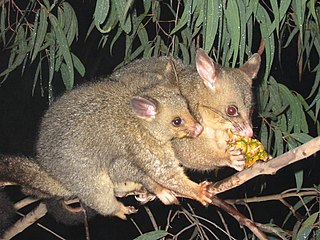
1080, the brand name given to the synthetic form of sodium fluoroacetate, is used in New Zealand in efforts to control populations of possums, rats, stoat and rabbits, which are invasive species in the New Zealand environment. Although the Parliamentary Commissioner for the Environment deemed the use of 1080 in New Zealand "effective and safe" in a 2011 re-evaluation and the substance is widely considered to be the most effective tool currently available for controlling possums over large areas, it remains a contentious issue, with the majority of the debate occurring between conservationists and livestock farmers on one side and hunters and animal-rights activists on the other.

The stoat was introduced into New Zealand to control introduced rabbits and hares, but is now a major threat to the native bird population. The natural range of the stoat is limited to parts of the Northern Hemisphere. Immediately before human settlement, New Zealand did not have any land-based mammals apart from bats, but Polynesian and European settlers introduced a wide variety of animals. Rarely, in Southland, the fur of stoats has been reported to turn white, being the fur known as ermine, which adorns royal robes.

The Brook Waimārama Sanctuary is a nearly 700 hectare mainland "ecological island" sanctuary located 6 km south of Nelson, New Zealand. The sanctuary is the largest fenced sanctuary in New Zealand's South Island and the second largest in the country; it is the only sanctuary to feature mature New Zealand beech forest.

4'-Aminopropiophenone is a chemical compound. It is highly toxic, and can cause injury or death upon physical contact or inhalation of fumes.

Cats are a popular pet in New Zealand. Cat ownership is occasionally raised as a controversial conservation issue due to the predation of endangered species, such as birds and lizards, by feral cats.

Victoria Forest Park, is situated on the West Coast of the South Island of New Zealand. At 2,069 square kilometres (799 sq mi) it is New Zealand's largest forest park. The park is administered by the Department of Conservation (DOC).
The NEXT Foundation is a privately funded New Zealand strategic philanthropy foundation launched in March 2014. It has a mandate to spend down $100 million over 10 years into environmental and educational projects that will benefit future generations of New Zealanders. NEXT Foundation invests in a small number of multi year initiatives with both financial and non financial support. It targets initiatives that are transformational, inspirational and run in a business like way.
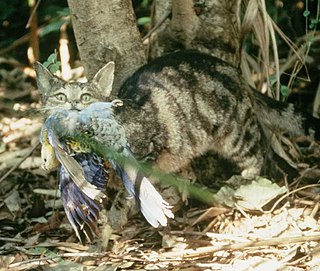
Cat predation on wildlife is the result of the natural instincts and behavior of both feral and owned house cats to hunt small prey, including wildlife. Some people view this as a desirable phenomenon, such as in the case of barn cats and other cats kept for the intended purpose of pest control; but scientific evidence does not support the popular use of cats to control urban rat populations, and ecologists oppose their use for this purpose because of the disproportionate harm they do to beneficial native wildlife. As an invasive species and predator, they do considerable ecological damage.
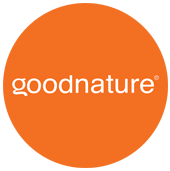
Goodnature is a New Zealand company specializing in the production of traps designed for the control of animal pests such as stoats, rats, mice and possums.

Great Island is an island in the southwest of New Zealand, and is part of Fiordland National Park. It lies in Taiari / Chalky Inlet, north of Chalky Island and contains two small lakes, Lake Dobson and Lake Esau.
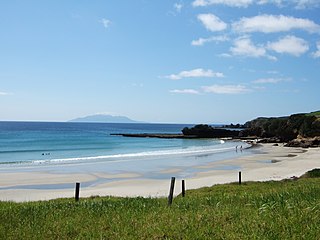
Tāwharanui Regional Park is a regional park on the Tāwharanui Peninsula in the Auckland Region of New Zealand's North Island. It is located in Rodney, east of Warkworth and north of Auckland.
References
- 1 2 Compare: Smallman, Elton Rikihaha (22 October 2016). "Predator Free 2050: Ambitious target gains widespread support". Stuff. Retrieved 17 January 2017.
It's a truly audacious plan - ridding the country of rats, stoats and possums - but proponents hope the reward will be a chorus of songbirds. [...] the government has pledged an additional $28 million over four years and an extra $7m each year following, over and above the $70 million already spent annually on predator control.
- ↑ Compare: Roy, Eleanor Ainge (25 July 2016). "No more rats: New Zealand to exterminate all introduced predators". The Guardian. The Guardian. Retrieved 17 January 2017.
The New Zealand government has announced a "world-first" project to make the nation predator free by 2050. [...] The prime minister, John Key, said on Monday it would undertake a radical pest extermination programme – which if successful would be a global first – aiming to wipe out the introduced species of rats, stoats and possums nation-wide in a mere 34 years.
- ↑ "New Zealand aims to become predator-free by 2050". BBC News. BBC. 25 July 2016. Retrieved 17 January 2017.
New Zealand has set a goal of eradicating all non-native predators within 35 years in order to protect the country's indigenous wildlife. [...] The clock is ticking for stoats, rats and possums, as Prime Minister John Key wants "every single part" of New Zealand to be free of the creatures by 2050, the New Zealand Herald reports. [...] Feral cats are also in the government's sights [...].
- ↑ Owens, Brian (11 January 2017). "Behind New Zealand's wild plan to purge all pests". Nature. Nature.com. 541 (7636): 148–150. Bibcode:2017Natur.541..148O. doi: 10.1038/541148a . PMID 28079089. S2CID 4462990 . Retrieved 20 March 2017.
[...] Russell is taking on a much bigger challenge. He is coordinating research and development for a programme that the government announced last July to eliminate all invasive vertebrate predators — rats, brushtail possums, stoats and more — from New Zealand by 2050 to protect the country's rare endemic species.
- ↑ Gudsell, Kate (2018-09-06). "Deadly poison plan worries cat owners". Radio New Zealand. Retrieved 2018-09-07.
The stray cat population is estimated to be about 200,000 and feral cats are listed as a pest in most regional councils' pest management strategies, but as of last year, only four councils invest in widespread suppression of cat populations.
- ↑ Kirk, Stacey (26 July 2016). "Government sets target to make New Zealand 'predator-free' by 2050". Stuff. Retrieved 17 January 2017.
- ↑ "New Zealand congratulated on Predator Free campaign". scoop.com. 25 July 2017. Retrieved 26 July 2017.
- ↑ "Predator Free 2050" (PDF). Department of Conservation. Retrieved 17 January 2017.
- ↑ Davison, Issac (25 July 2016). "Government reveals conservation project with aim to be predator free by 2050". NZ Herald. Retrieved 17 January 2017.
- ↑ "The Predator Free 2050 Research Strategy". scoop.com. 16 November 2017. Retrieved 6 December 2017.
- ↑ "Predator Free NZ - Expert Q&A". Scoop. 17 January 2017. Retrieved 17 January 2017.
- ↑ Regalado, Antonio (10 February 2017). "First Gene Drive in Mammals Could Aid Vast New Zealand Eradication Plan". MIT Tech Review. Retrieved 14 February 2017.
- ↑ Fan, Shelly (2 March 2017). "Natural Selection Is About to Be Overpowered by the First-Ever Mammalian Gene Drive". Singularity Hub. Retrieved 20 March 2017.